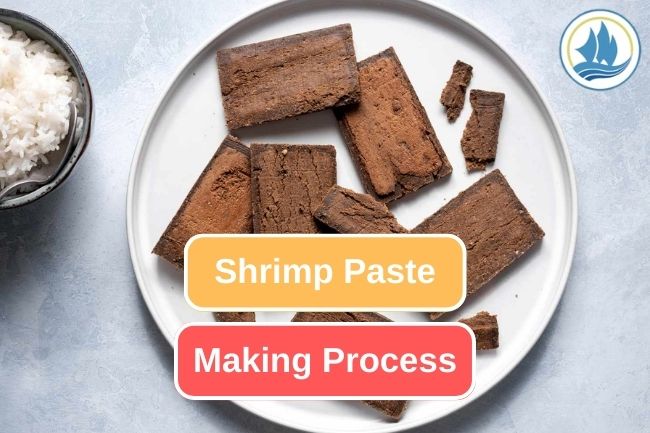Learn about Shrimp Paste Making Process
By. Nevanda - 28 Jul 2023
kelolalaut.com - Shrimp paste is a popular food ingredient in several Southeast Asian countries, especially Indonesia. The manufacturing process involves the fermentation of shrimp and salt which results in a distinctive aroma and strong flavor. Here are the general steps in the process of making shrimp paste:
Ingredients required:
- Fresh shrimp (usually krill shrimp or smaller shrimp)
- Salt
Read also: 5 Ways to Choose Fresh Shrimp
Steps:
1. Shrimp Selection
Choose good quality fresh shrimp. Usually, the type of shrimp used for making shrimp paste is small shrimp or krill. Make sure the shrimp used are fresh and undamaged.
2. Shrimp Washing
Wash the shrimp with clean water to remove dirt and other substances attached to the shrimp.
3. Shrimp Drying
After washing, drain the shrimp and let it dry by drying in the sun for a few hours until the water evaporates and the shrimp becomes dry.
4. Fermentation
Once the shrimp are dry, place them in a clean container. Add enough salt to the container in a certain ratio depending on the amount of shrimp used. Salt serves to preserve the shrimp and help the fermentation process.
Read also: List of Common Seafood Delights in Sushi
5. Storage
Tightly close the container containing the shrimp and salt mixture and store it in a dark place away from direct sunlight. Allow the shrimp and salt mixture to ferment for a few weeks until it reaches the desired level of doneness.
6. Final Drying
Once the fermentation process is complete, remove the shrimp paste from the container and let it dry in the sun again to reduce the moisture level and increase the concentration of the shrimp paste flavor.
7. Grinding (optional)
If desired, the shrimp paste can be ground into a fine powder for easier use in cooking.
Once the above process is complete, shrimp paste is ready to be used in a variety of dishes to impart its distinctive aroma and flavor. Keep in mind that making shrimp paste can produce a strong odor, so it is best done in a well-ventilated area or outdoors. Also, if you make your own shrimp paste, be sure to follow good hygiene and storage instructions to avoid the growth of unwanted microorganisms.
Read also: How to Make the Perfect Garlic Butter Crab at Home
.jpg)
The Impact of HACCP-Based Integrated Quality Management Programs on the Quality and Competitiveness of Fresh Demersal Fish Products
 and Employee Productivity on the Demersal Fish Processing Floor.jpg)
The Correlation Between Occupational Health and Safety (OHS) and Employee Productivity on the Demersal Fish Processing Floor

Human Resource Management Challenges and Training Needs in Implementing HACCP Quality Standards within the Fish Processing Industry

The Legal Shark Value Chain: Identifying Critical Control Points for Cost Efficiency and Value Enhancement from Catch to Consumer



.jpg)
 in Meeting Global Protein Demand Sustainably.jpg)